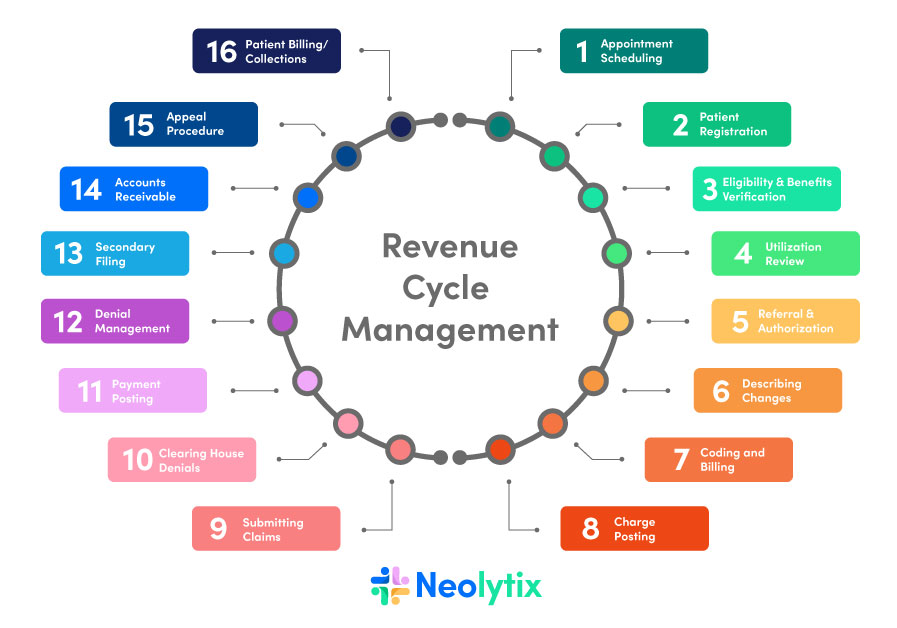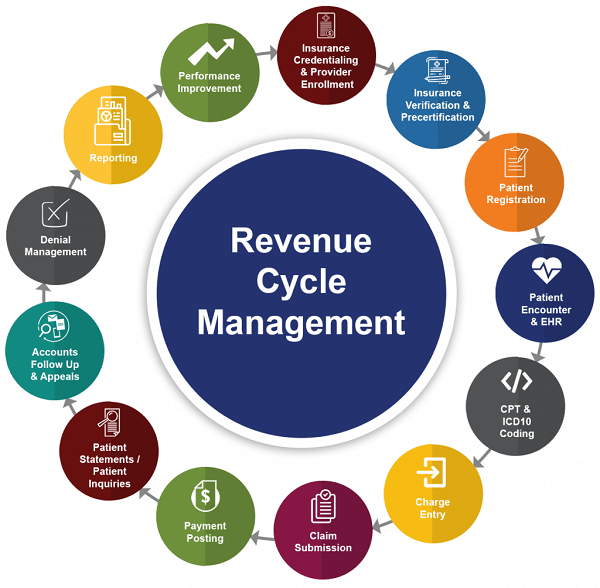In the realm of healthcare administration, understanding the intricacies of medical billing is crucial. With countless steps involved, it is essential to navigate through them systematically and efficiently. This article aims to shed light on the number of steps involved in RCM (Revenue Cycle Management) Medical Billing. By exploring and explaining the various stages within this critical process, you will gain a comprehensive understanding of the steps required to ensure accurate and streamlined medical billing.
Introduction
In the world of healthcare, efficient and accurate medical billing is vital for the financial health of medical practices. Revenue Cycle Management (RCM) plays a critical role in the medical billing process, ensuring that healthcare providers receive timely and accurate payments for their services. RCM involves a series of steps that healthcare organizations must follow to optimize their revenue collection. In this article, we will explore the ten key steps involved in RCM medical billing, providing a comprehensive overview of each stage.
Step 1: Patient Registration
The first step in the RCM medical billing process is patient registration. This involves collecting accurate and complete patient information, including personal details, insurance information, and contact information. Patient registration is crucial as it establishes the foundation for effective billing and helps healthcare providers stay connected with their patients throughout the payment process.
During the patient registration process, it is essential to verify insurance coverage. This involves confirming the patient’s insurance policy details, coverage limits, and any special requirements or restrictions. Verifying insurance coverage upfront helps prevent billing errors and ensures that services provided are covered by the patient’s insurance plan.

This image is property of neolytix.com.
Step 2: Appointment Scheduling
Once the patient is registered, the next step in the RCM medical billing process is appointment scheduling. This involves booking appointments for patients based on their medical needs and provider availability. Efficient appointment scheduling is crucial to optimize the utilization of healthcare resources and ensure that patients receive timely care.
In addition to booking appointments, it is essential to update patient records during this step. Any changes in the patient’s personal information, insurance coverage, or medical history should be accurately recorded to ensure accurate billing and continuity of care.
Step 3: Eligibility Verification
Eligibility verification is a critical step in the RCM medical billing process as it ensures that the patient’s insurance coverage is active and that the services provided will be reimbursed. During eligibility verification, healthcare providers check the patient’s insurance eligibility by contacting the insurance company or utilizing electronic verification systems.
In addition to confirming insurance eligibility, healthcare providers must identify any coverage limitations that may affect the billing process. This includes understanding the patient’s deductible, copayment requirements, and any excluded services or procedures. By identifying insurance coverage limitations upfront, healthcare providers can set accurate expectations with patients regarding out-of-pocket costs and payment responsibilities.
Step 4: Pre-Authorization
Pre-authorization is a crucial step in the RCM medical billing process for services that require prior approval from the insurance company. This step involves obtaining pre-authorization for specific procedures or treatments to ensure that they will be covered by the patient’s insurance.
During the pre-authorization process, healthcare providers submit detailed information about the recommended treatment plan to the insurance company. This includes relevant medical records, diagnostic test results, and supporting documentation. Obtaining pre-authorization helps prevent claim denials and ensures that healthcare providers receive timely reimbursement for the services provided.
Step 5: Charge Capture
Charge capture involves accurately recording the services provided to patients during their visit. This step in the RCM medical billing process ensures that all services rendered are documented, allowing for proper billing and reimbursement.
Healthcare providers must record the services provided, including procedures, treatments, and any additional resources utilized during the patient’s visit. Accurate charge capture is crucial as it forms the basis for subsequent coding and claims submission.
.
Step 6: Coding
Coding is a complex and essential step in the RCM medical billing process. During coding, healthcare providers assign appropriate diagnosis and procedure codes to accurately describe the services provided to patients. These codes are standardized and universally recognized, enabling efficient communication between healthcare providers, insurance companies, and regulatory bodies.
Assigning appropriate diagnosis and procedure codes requires specialized knowledge and adherence to coding guidelines. Healthcare providers must ensure that the codes assigned reflect the true nature of the patient’s condition and the services delivered. Coding errors can lead to claim denials or inaccurate reimbursement.
Step 7: Claims Submission
Once the coding process is complete, healthcare providers proceed with claims submission. This step involves preparing and submitting claims to the patient’s insurance company for reimbursement. Claims submission requires careful attention to detail and adherence to insurance company guidelines to prevent claims from being rejected or delayed.
During claims submission, healthcare providers compile all relevant documentation and accurately complete claim forms. This includes attaching medical records, billing codes, and any supporting documentation required by the insurance company. Once submitted, providers should track the claim submission status to ensure timely processing and reimbursement.
Step 8: Claims Processing
Upon receiving the claims, the insurance company reviews them for accuracy and completeness. This step in the RCM medical billing process, known as claims processing, involves adjudicating the claims to determine the reimbursement amount.
During claims processing, insurance companies review the submitted claims, compare them to their coverage policies, and verify the accuracy of the coding and documentation. They may request additional documentation or clarification from the healthcare provider if necessary. Once the claims are reviewed, they are either approved for payment or denied.
Step 9: Payment Posting
After the claims have been approved, payment posting is the next step in the RCM medical billing process. This involves recording and allocating the received payments from the insurance company. Payment posting ensures accurate financial records and allows healthcare providers to track their revenue.
During payment posting, healthcare providers match the received payments with the corresponding claims and update their financial systems accordingly. Any adjustments, such as contractual allowances or patient responsibilities, are accurately recorded. Payment posting plays a vital role in maintaining accurate financial records and tracking the payment status of each claim.
Step 10: Denial Management
Despite careful adherence to the RCM medical billing process, claim denials can still occur. Denial management is the final step in the process and involves identifying and resolving claim denials promptly. This step may also involve appealing denied claims if necessary.
During denial management, healthcare providers review the reason for the denial and take appropriate action to address it. This may include correcting coding errors, providing additional documentation, or appealing the denial with the insurance company. Effective denial management is crucial to minimize revenue loss and ensure timely reimbursement for the services rendered.
In conclusion, the RCM medical billing process consists of ten comprehensive steps that healthcare organizations must follow to optimize their revenue collection. From patient registration to denial management, each stage plays a crucial role in ensuring accurate billing, timely reimbursement, and financial stability for healthcare providers. By understanding and implementing these steps effectively, healthcare organizations can streamline their billing process and maximize their revenue potential.
